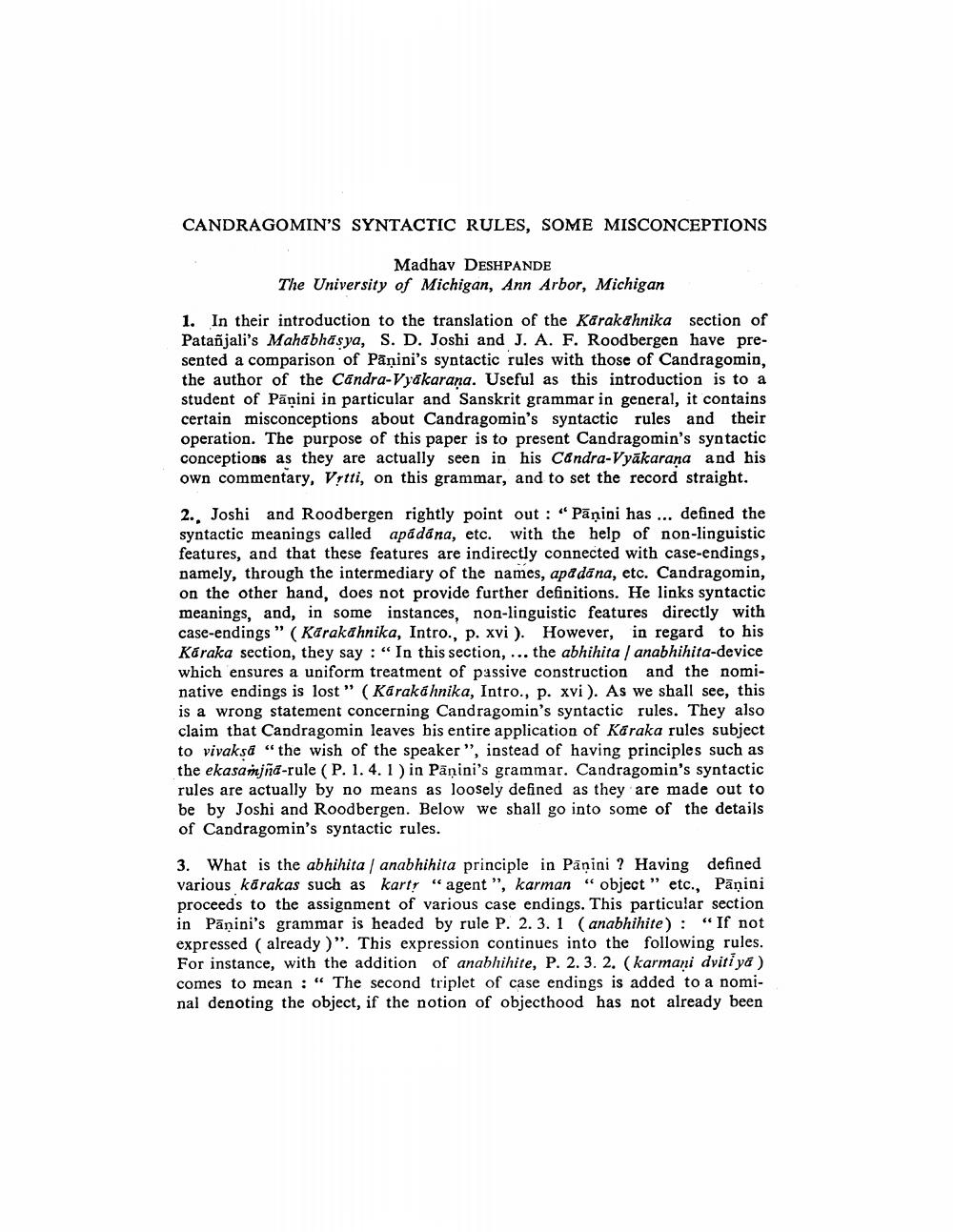Book Title: Candragomins Syntactic Rules Some Misconceptions Author(s): Mahadev Deshpande Publisher: Mahadev Deshpande View full book textPage 1
________________ CANDRAGOMIN'S SYNTACTIC RULES, SOME MISCONCEPTIONS Madhav DESHPANDE The University of Michigan, Ann Arbor, Michigan 1. In their introduction to the translation of the Karakahnika section of Patañjali's Mahabhasya, S. D. Joshi and J. A. F. Roodbergen have presented a comparison of Panini's syntactic rules with those of Candragomin, the author of the Candra-Vyakarana. Useful as this introduction is to a student of Panini in particular and Sanskrit grammar in general, it contains certain misconceptions about Candragomin's syntactic rules and their operation. The purpose of this paper is to present Candragomin's syntactic conceptions as they are actually seen in his Candra-Vyakarana and his own commentary, Vrtti, on this grammar, and to set the record straight. 2., Joshi and Roodbergen rightly point out : “Pāṇini has ... defined the syntactic meanings called apádána, etc. with the help of non-linguistic features, and that these features are indirectly connected with case-endings, namely, through the intermediary of the names, apa dāna, etc. Candragomin, on the other hand, does not provide further definitions. He links syntactic meanings, and, in some instances, non-linguistic features directly with case-endings" (Karakahnika, Intro., p. xvi ). However, in regard to his Káraka section, they say: "In this section, ... the abhihita / anabhihita-device which ensures a uniform treatment of passive construction and the nominative endings is lost" (Kárakáhnika, Intro., p. xvi). As we shall see, this is a wrong statement concerning Candragomin's syntactic rules. They also claim that Candragomin leaves his entire application of Karaka rules subject to vivaksā “the wish of the speaker", instead of having principles such as the ekasamjña-rule (P. 1. 4. 1) in Pāņini's grammar. Candragomin's syntactic rules are actually by no means as loosely defined as they are made out to be by Joshi and Roodbergen. Below we shall go into some of the details of Candragomin's syntactic rules. 3. What is the abhihita / anabhihita principle in Pāṇini ? Having defined various kārakas such as kart, “agent", karman "object" etc., Pāņini proceeds to the assignment of various case endings. This particular section in Panini's grammar is headed by rule P. 2.3.1 (anabhihite): “If not expressed already )". This expression continues into the following rules. For instance, with the addition of anabhihite, P. 2. 3. 2. (karmani dviti ya ) comes to mean : “ The second triplet of case endings is added to a nominal denoting the object, if the notion of objecthood has not already beenPage Navigation
1 2 3 4 5 6 7 8 9 10 11 12 13
